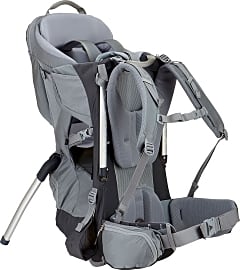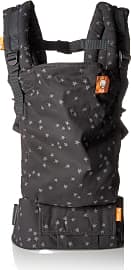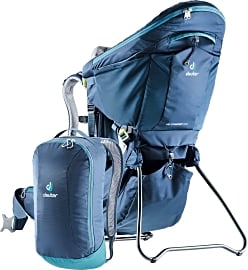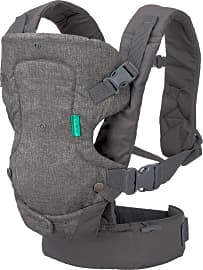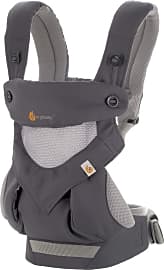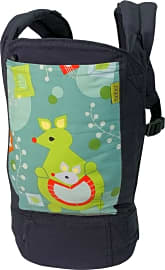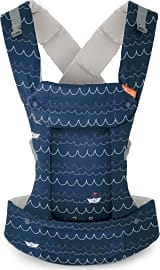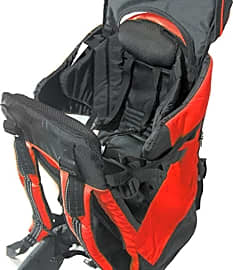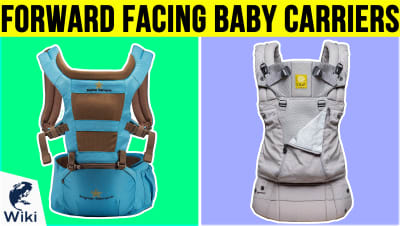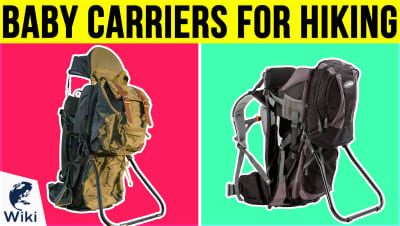The 10 Best Baby Backpacks

This wiki has been updated 39 times since it was first published in April of 2015. If you prefer to carry your little one around with your hands free, one of these baby backpacks should be on your shopping list. They provide a secure seat for your child without tiring your arms out. From structured fabric models suitable for a newborn to heavy-duty versions fit for taking toddlers and their gear on wilderness excursions, these ergonomic carriers have got you covered. When users buy our independently chosen editorial recommendations, we may earn commissions to help fund the Wiki.
Editor's Notes
July 02, 2020:
Today we added in the Thule Sapling, which is a popular choice among active parents who like to hit the trails with their little one in tow. It’s got a fully adjustable back panel and hip belt for a comfortable fit, and which also facilitates a quick and easy transition between parents who want to trade off baby duty. It’s got a large zippered compartment as well as two easy-access pockets on the help belt to keep pacifiers or snacks within reach. For your baby’s comfort and proper positioning, it’s got a height-adjustable seat, and the deployable sunshade can help block out the sun’s rays. You can load your child from either the top or the side. It’s made to accommodate kids between 16 and 48 pounds in weight. This new addition takes the place on our list of the Onya Outback, which has been discontinued by the manufacturer.
If you’re not the outdoorsy type and are looking instead for a lightweight, comfortable model for running errands or short walks through the neighborhood, check out the Líllé Complete, which offers a comfortable, breathable design with a back panel that can grow with your child and also helps provide support for a newborn’s developing neck and head. A similar enough model is the Tula Free-to-Grow, and this one comes with a handy snap-on hood that can provide head support and sun protection, as well as ensure some privacy when you’re nursing your child. It comes in an array of stylish patterns to choose from. For a highly versatile choice that allows you to carry your child in a variety of positions, look to the Ergobaby 360. You can configure it for positioning your baby on your back or your hip, or in front of you while facing either inward or outward.
For additional models geared toward older babies and toddlers, our list of best forward facing baby carriers has you covered. For more options geared toward outdoorsy parents, check out our list of best baby carriers for hiking. As with many other types of parenting gear, proper use of your baby backpack is important to avoid accidents or injuries. First and foremost, make sure your child is not positioned in a chin-to-chest manner that can cause his or her airway to become constricted. In addition, to ensure he or she can breathe properly, the head should not be pressed up against your back or your chest. Babies in these carriers should be able to look up and turn their heads at will. For very young infants whose neck muscles are still developing, a head support is needed, which does come with many of the models on our list. Limbs should not be constricted by the backpack; rather, babies should be able to move their arms and legs around a bit. The hips should be able to stay in a position close to the child’s belly, since having the legs hang straight downward can put your little one at risk for hip dysplasia. Ensure your infant does not become overheated when you’re wearing him or her, which is a higher risk during the summer months. Babies who are sweating or turning red should be removed from a carrier so they are able to cool down.
Bringing Youngsters Along For The Ride
There are also decidedly more advanced options, including adjustable carriers that can hold a baby in various ergonomic positions throughout the first two years.
Throughout the existence of Homo sapiens, we've been looking for the ideal way to safely and comfortably carry our babies along with us when we're on the move – from our earliest ancestors making their way across wild, primitive landscapes, searching for food and seeking protection from the elements and predators, to modern parents making their way through busy airports, navigating crowded streets, and hiking rugged trails with offspring in tow.
While other mammals emerge from the womb mere heartbeats away from self-sufficiency, newborn humans are almost entirely helpless, a state which essentially endures well into the toddler years. Healthy adults can easily carry smaller infants in their arms, but as children grow, they rapidly become too heavy to be carried for extended periods of time. And – since cradling a squirming child renders the arms effectively useless otherwise – it's hardly conducive to any other activity besides ferrying offspring and getting a good upper body workout.
A brief survey of various cultures, both ancient and extant, reveals a variety of clever ways people have devised to carry children securely and with reduced effort for the adult. One of the most iconic images of "babywearing" (as the practice is often described) is of the Amuati, the fur parka worn by Inuit mothers of the frigid Arctic region. The Amuati is a large parka with a dedicated scoop-shaped pocket in the back designed to hold a child from shortly after birth through their second year, keeping the child warm even in the Arctic chill.
Many Native American tribes adopted the use of a device known as the Cradleboard, which involved a frame made of wood overlaid with soft fibers that formed a safe, supportive slot for a child. The cradleboard could be carried on an adult's back or laid down when the parents were not on the move.
Peoples from myriad cultures adopted sling-style carriers, with fabric wrappings used to support babies among the Hmong, in Indonesia, Ethiopia, and beyond.
Modern parents have considerably more baby and/or toddler carrying options at their disposal. Many popular child carriers of today are modeled directly on their ancient forebears, including wraps that consist of nothing more than sturdy bands of fabric. There are also decidedly more advanced options, including adjustable carriers that can hold a baby in various ergonomic positions throughout the first two years.
But for ideal weight distribution for the adult trekker – and for long-term comfort of a baby or toddler coming along for an extended ride – a baby backpack is the ideal child transport solution.
Choosing The Right Baby Backpack
Different baby backpacks can accommodate different sizes of children. Thus the size of your child (or the baby or toddler in your care) generally dictates which carriers you can even consider. If your child's weight exceeds the range of a backpack's stated weight rating, it's not even worth considering.
Another useful element is a slender chest strap to help alleviate pressure on the shoulders.
Once you've identified a few viable options for your child's size, consider the pack's accessories. A sun shield is often a must; children's delicate skin should be protected from excessive sun exposure. Some packs also have full canopies with "windows" to repel rain – great features for areas prone to inclement weather. Just make sure to fold the side panels out of the way when they're not needed so your child gets plenty of fresh air.
All good baby backpacks should feature padded shoulder straps and a broad waist strap, all of which must be easily adjustable. Another useful element is a slender chest strap to help alleviate pressure on the shoulders. Without any of these key features, the pack may be too difficult or even unsafe to use. Note that when properly adjusted, a well-designed backpack distributes the load evenly and shifts the bulk of the pack's weight to your hips, so look for ample padding in this area.
Finally, consider the extra pockets and pouches in the pack. If you and your precious cargo will be traveling alone, it's essential that you have enough space for the water, food, first-aid gear, and likely some fresh clothes you or the baby might need. You don't need to fill every pocket to capacity, but a baby backpack must offer plenty of storage space for essentials. Even better is accessible storage that you can reach without completely removing the pack – or being a contortionist.
Tips For A Safe Enjoyable Outing
Remember that – although you're doing most of the work when carrying your child – extended jostling about in a backpack can be a rigorous experience for a youngster. Make sure you and your child both get plenty of fluids during a hike or an afternoon spent traveling the city to stay hydrated, and watch out for signs that excessive heat, cold, sunlight, or other elements may be having adverse effects on your passenger.
Remember that – although you're doing most of the work when carrying your child – extended jostling about in a backpack can be a rigorous experience for a youngster.
Never keep your child in a backpack for more than an hour at a time; frequent breaks are ideal for preventing rashes, stiffness or soreness of the limbs, and other discomforts along the way.
And don't overwork yourself, either. Anytime you're carrying a child, try to pass off as much additional weight as possible to another adult traveling with you. The less fatigued you grow, you more easily and safely you'll be able to tote the youngster in your charge. Knowing your own strengths and limitations – and respecting those of the child traveling with you – can help ensure many a safe and pleasant outing for both of you.


